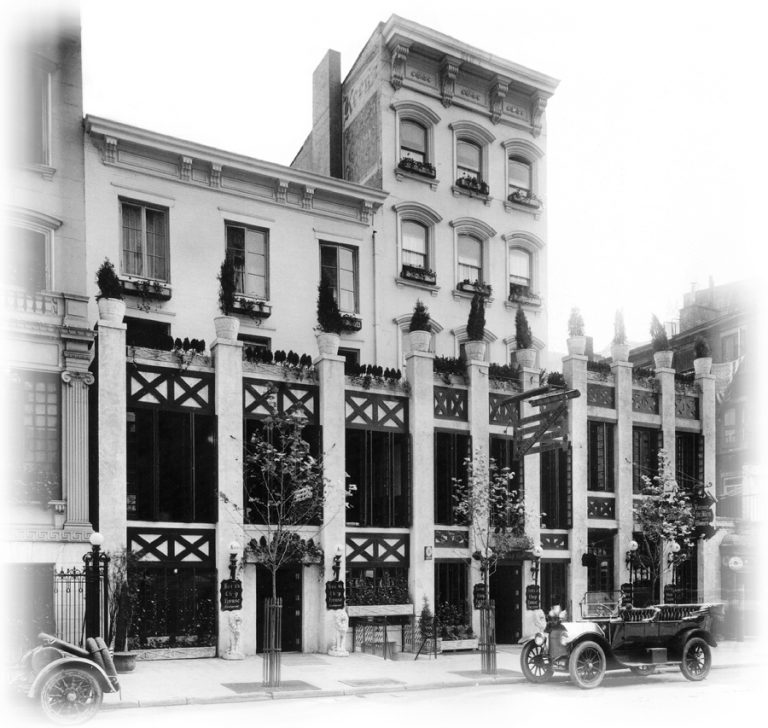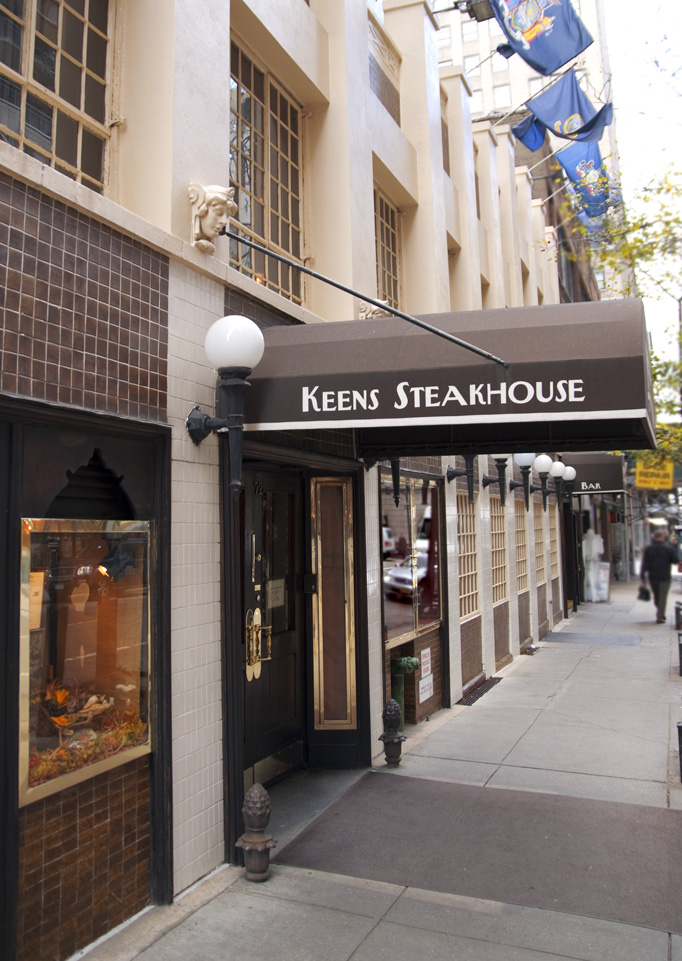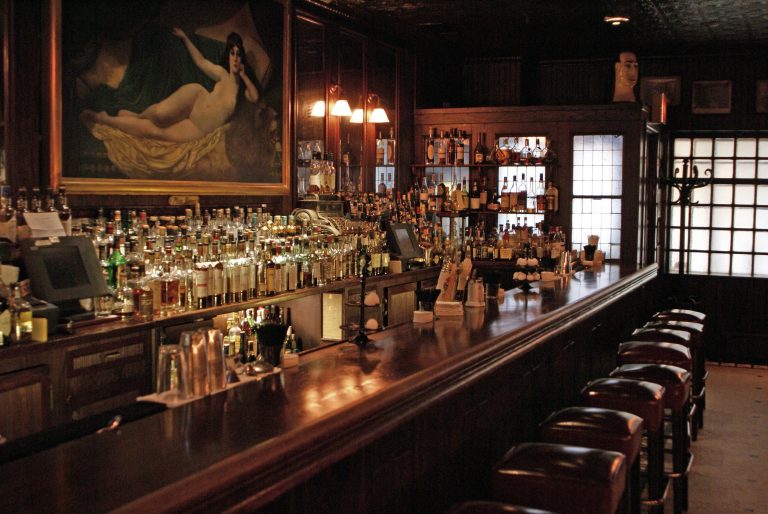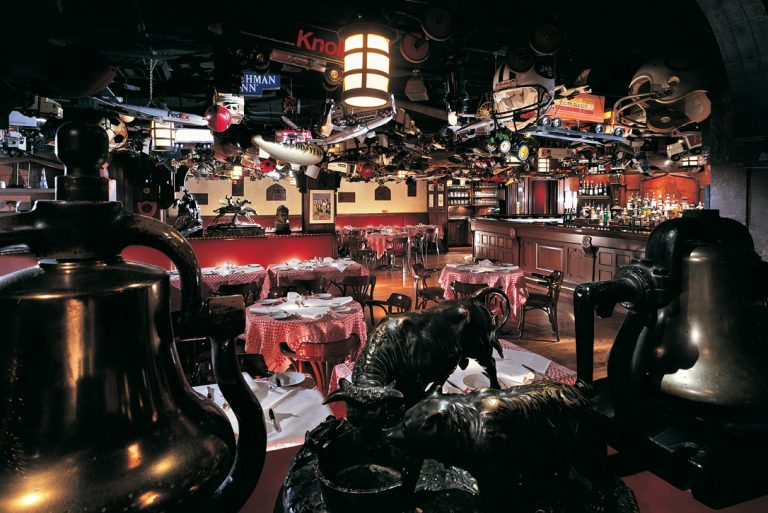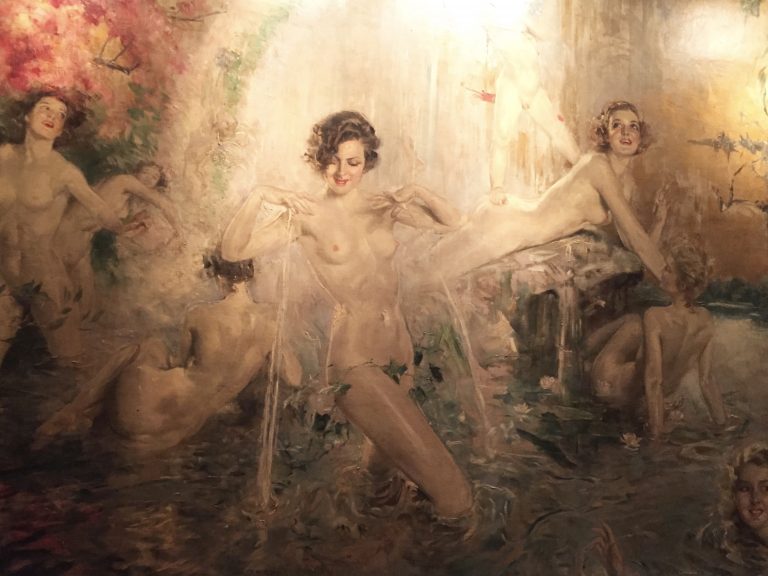The Stalwarts of New York City
“There is no place like it, no place with an atom of its glory, pride, and exultancy. It lays its hand upon a man's bowels; he grows drunk with ecstasy; he grows young and full of glory, he feels that he can never die.” — Walt Whitman, New York City
In the ghost town that is modern New York City, many of the once-heralded drinking dens of yore are long gone. Worse, others are still here but in recent years been made over beyond recognition, places that are no longer for the city but meant only to lure in those from other places. However, a few have managed to stand the tests of time in their original fashion, or close enough to it. Here are a few of those historic institutions where even real New Yorkers still want to come for a drink.
Fraunces Tavern
54 Pearl Street
New York, NY 10004
(212) 425-1778
frauncestavern.com
Originally built in the 17th century (though renovated several times after fires, floods, rebellions and other disasters), Fraunces Tavern, named for the building’s third owner, Samuel Fraunces, is one of the city’s oldest bars, splashed with centuries of history. Saloons were once the soul of American business and politics and this one was the James Brown of them all. During the heart of the American Revolution, it’s where the Sons of Liberty regularly met, where the actual seat of American government was located before moving to D.C., and where George Washington eventually bid farewell to his troops. The tavern serves an impressive selection of beers and spirits (especially whiskey), and even makes a few decent house cocktails. The food, both of the snacking and hearty meal variety, is also quite good. One can even explore more about local history in its attached museum, and it’s also an ideal place to wait out a parlor seat vacancy notification from the Dead Rabbit around the corner when their tap room is stuffed to the gills.
Keens Steakhouse
72 West 36th Street
New York, NY 10018
(212) 947-3636
Keens is very proud of saying they have been in operation since 1885. That’s sort of true. Albert Keen first opened an artist's dining spot, the Lamb’s Club, downtown that year. However, it wasn’t until 1905 that he went into business with Paul Henkel - who was the nephew of one of the city’s first celebrity bartenders, Harry Johnson - and opened Keen’s Chophouse (both the “chophouse” and apostrophe were dropped when under new management decades on) in its current location. Two years later, Keen went off to manage another property and left Henkel in charge. It’s been said he had some wild ideas, including installing a chicken coop on the roof for fresh eggs, most certainly to the delight of the neighbors.
One of the distinguishing features of the restaurant are the clay pipes that line the ceilings of its numerous old world style dining rooms - a throwback to the 17th century practice of checking one’s pipe at the inn because they are too fragile for constant transportation. The pipes were ordered by the thousands from the Netherlands for its growing Pipe Club, whose distinguished members included over the years Teddy Roosevelt, Babe Ruth, Albert Einstein and “Buffalo Bill” Cody.
A notorious story that is told about Keens is that one of its most famous patrons, Lillie Langtree - the early 20th century actress, singer and former mistress of Edward the Prince of Wales - was ejected from what was then a men’s only dining room and was instrumental in changing the restaurant’s policy to allow women. However, as told by Sipsmith Master Distiller and drinks historian Jared Brown: “Truth is that Lillie Langtree, who was considered the most beautiful woman in the world at the time, amongst other talents, (referring to her singing voice, of course) could have walked in and asked Paul to get on his hands and knees and said, ‘I’d like my double mutton chop on your back,’ and they would have done it. It was Lillie Langtree! The ‘Jersey Lillie’!”
Brown further explains, “It was a rather ‘plain-looking’ (according to the newspapers) suffragette, who could have been served had she remained civil. She insisted on stepping upon her chair and shouting until such time as she was removed. So that’s where that story must come from.”
Either way, Keens is still by far one of the city's best places for a steak, prime rib or mutton chop (just don’t ask to eat it off someone’s back), especially with a Martini or Manhattan in its attached bar, which easily holds one of the most comprehensive, unsung spirits collections in the city. Wine lovers can also rejoice at the restaurant’s approachable and well-curated wine list that satisfies almost any budget.
Delmonico’s
56 Beaver Street
New York, NY 10004
(212) 509-1144
It is known as “America’s first restaurant” (and the first to use table cloths), open, though not continuously, since the 1820s. Like many of its storied contemporaries, it has undergone closures and changes of hand many times over the years. There are several Delmonico’s restaurants now, but the one at its current address (in the early 19th and 20th century it was most notably located at 23 William St. and 2 South William St.), is now considered the flagship, open since the 1920s. It has always been a place to employ aspiring bar folk, and it’s still a solid spot for sipping a cocktail and toasting to the scores of prominent figures who have passed through its ornate doors, including Theodore Roosevelt, Mark Twain, Nikola Tesla and Lillian Russell.
One of the most prominent bartenders to work for Delmonico’s was Harry Johnson (at the South William street location). Therefore, to imbibe a bit of New York history, have a Johnson classic, like a Whiskey Cocktail. Here’s a recipe adapted from the original found in The Deans of Drink, by Anistatia Miller and Jared Brown.
Whiskey Cocktail
2 dashes gum syrup (or substitute with simple)
2 dashes of aromatic bitters (the original calls for Boker’s)
2 dashes of curaçao (orange, presumably, unless you have a thing for the color blue)
1 wine glass (let’s just call that 2.5 oz/75 mL) of whiskey (take your pick of which kind)
lemon peel
garnish: cherry or “medium sized olive” (though why anyone would chose the latter here is a head-scratcher), and lemon peel
Stir the ingredients except peel with ice in a cocktail glass and strain into a chilled cocktail glass shape of choice (coupe is probably your best bet). Drop in the cherry or olive (really?) and express the peel over the drink, then discard. Serve.
Bamonte’s
32 Withers Street
Brooklyn, NY 11211
(718) 384-8831
no website
Is there anything more New York than a classic red gravy Italian restaurant? Fuhgeddaboudit! This Williamsburg, Brooklyn classic is inarguably the king, or the don, of them all. The large, scarlet-hued dining room has been open since 1900, still operates within the Bamonte family, and the waiters in burgundy tuxedos still present the food in the formal style. Order a Negroni, hum along to “Mambo Italiano” and you’ll feel like you’ve stepped into an Italian mobster movie set.
‘21’ Club
21 West 52nd Street
New York, NY 10019
(212) 582-7200
Here “club” is a relative term as there is no membership per se. Almost anyone can enter ‘21’ as long as they know how to clean up well (men are still required to wear jackets and denim is frowned upon). It was opened on New Year's Eve 1929 by cousins Jack Kriendler and Charlie Berns as a speakeasy, with a hidden wine cellar that is still in use. Behind the bar, automatically collapsible shelving would empty its bottles down a series of chutes into the sewer system below in the event of a surprise raid. (When the Paley Center next door was under construction in the 1980s, it was said the scent of alcohol still emanated from the foundation.)
Nowadays, the former Bar Room is its main dining room. The bar is now across the room and the shelves remain fixed, presiding over red check-clothed tables that have hosted dozens of acclaimed celebrity regulars like Frank Sinatra, the Marx Brothers, Humphrey Bogart, Dorothy Parker, Yankees owner George Steinbrenner, Bette Midler, members of British royalty and several sitting and former presidents.Ernest Hemingway would drink his Papa Dobles here, though on an off night he changed his regular order: “Since I’m not drinking, I’ll just have a tequila.” To this day, the likes of Alec Baldwin, Ricky Gervais, Bill Murray and Whoopie Goldberg still make a point of passing through that famous Iron Gate guarded by jockeys.
Crowds of tchachkas (New York speak for “knickknacks”) and artifacts of bygone decades adorn the Bar Room along the walls and even the ceiling, along with a collection of cartoons from famous illustrators, most notably Walt Disney, Elize Segar, Peter Arno, Bill Gallo and Gene Ahern. During the Depression, artistic regulars paid their tab by contributing paintings, which still hang in the foyer, lounge and Remington Room, and it’s practically a museum to artist Frederic Remington, with 25 of his paintings.
While ‘21’ boasts one of the most extensive wine lists in the city, it is also a fine place for a cocktail. A Martini is the iconic choice, but through the years, the signature drink, born here but traveled the world over, has been the Southside - a tall, refreshing concoction that’s a bit like a gin Julep. It’s a riff on the Major Bailey, which was the house drink at Jack and Charlie’s former bar, the Puncheon on West 49th Street.
'21' Club Southside
2 oz dry gin
1 oz mint simple syrup (add several sprigs of mint while preparing the standard 1:1 recipe and strain)
4 – 5 fresh mint leaves
juice of one lemon
splash soda
Vigorously shake all ingredients with ice to work that mint. Strain into a Collins glass and garnish with fresh mint.
Bemelmans Bar
The Carlyle Hotel
35 East 76th Street
New York, NY 10021
212-744-1600
The bar gets its name for Ludwig Bemelmans, the illustrator best known for bringing to life the Madeline children’s books. Open since 1930, the artist lived at the Carlyle Hotel with his family in exchange for payment for the whimsical artwork he contributed to the walls and fixtures of the art deco piano bar, set off by a stunning 24-karat gold leaf ceiling. Between the decor and the formal bar service it hardly gets much more old world New York than this - once inside the only detail that might give away the current date is the modern attire of some of its patrons. A first glance at the menu might give off a just-another-predictably-overpriced-cocktail-bar-in-a-swanky-hotel vibe. However, order a Martini or Manhattan here and it arrives in a full cocktail glass along with a mini decanter on ice of nearly another drink’s worth. AND there is a tray of free (what my mother refers to as “gratuitous”) bar snacks including cheese straws, nuts and chips. So in cocktail math, that $20+ drink just saved you at least $15 elsewhere. Incidentally, this is also one of the bars where modern drinks legends like Dale DeGroff and Audrey Saunders worked in the days leading up to the cocktail renaissance.
Other Historic Bars of Note, Some With a Few... Tweaks
The Leopard at Des Artistes
1 West 67th Street
New York, NY 10023
(212) 787-8767
Everyone wants to sip a cocktail next to a pretty lady. Here, originally known as Café des Artistes, bathing beauties adorn every wall in exquisite murals that have recently been restored to their former 1920s glory, painted by artist Howard Chandler Christy. It was named such because the café prepared the meals of the building’s tenants - painters, musicians, writers, etc. - who usually had no cooking facilities in their own apartments. Now open as the Leopard at Des Artistes, not only have the bar and dining room undergone an extensive renovation, so has the food, with the excellent Spanish-inflected Sicilian cuisine prepared under a new executive chef. The bar is located at the back of the restaurant, where one can enjoy a drink in the same location as some of the early 20th century building’s most famous residents, which included Noel Coward, Norman Rockwell and Fannie Hurst.
They have an impressive, Italian-leaning wine list, and also a menu of signature cocktails, including the Christy Girl. Here’s an adaptation of that drink:
Christy Girl
½ oz/ 15 mL Aperol
1 oz/60 mL dry vermouth
2 oz/60 mL fresh watermelon juice
Prosecco
Garnish: mint sprig
Shake the Aperol, vermouth and watermelon juice with ice until chilled. Strain into a wine glass or rocks glass filled with fresh ice. Top with Prosecco. Garnish.
The Grill
99 East 52nd Street
New York, NY 10022
2121-375-9001
The bar in what was once the Four Seasons Restaurant has closed and been reopened by star restaurateurs Mario Carbone, Jeff Zalaznick, and Rich Torrisi as The Grill (The Pool also opened this week). While the signature brass-rod-and-chain architecture in this space in the Seagram Building still appears very much like it always did, the drinking experience is perhaps missing a little of that personal weathered polish of yore (which is not to say the bartenders aren't hospitable, it just seems all too new). Still, it’s worth saddling up the bar and letting the stinging cost of a pre-batched Martini work its magic.
The Campbell
15 Vanderbilt Avenue
New York, NY 10007
212-297-1781
An entire petition of New Yorkers was devastated that the Campbell Apartment - one of the great hidden bars of the city, located in an annex of Grand Central Station that was once a private residence - was closing after a finance dispute last year. What they didn’t expect was that the Gerber Group would open a fairly close facsimile sans dress code in plain sight (there is even a Palm Court on the street side of it now so you can’t miss it), even, thankfully, with the same head bartender, Paris DuRanté. You won’t miss the moldy old carpeting, but the early afternoon zen of a quiet drink in the cinematic shadows filtering through the grand, ironwork-framed window is a nice thing only sheer luck can now let us have since the music’s turned up and the crowds know where to find it.
Ruby’s Bar & Grill
1213 Rieglemann Boardwalk (Coney Island)
Brooklyn, NY 11224
718-975-RUBY (7829)
The former Hebrew National Deli was taken over in 1972 by Ruby Jacobs, a local businessman with a lifelong affair with the surf life. He was a Coney Island fixture that ended up opening one. No trip to the boardwalk is complete without a visit to Ruby’s, with its photo and memorabilia-covered walls, and the scent of fried clams curling into the briny and slightly sour Brooklyn oceanside air. It’s been saved from extinction many times over the years, and is now one of the only original (they can be counted on a punished thieve's hand) Coney businesses still in operation. Ruby might have departed this world to the deep ocean beyond in 2000, but after a ride on the Cyclone, you can toast to his memory with a Coney Island Brewery Mermaid Pilsner and maybe join a little impromptu seaside dance party.

